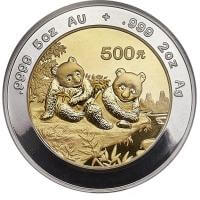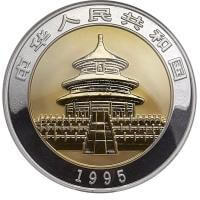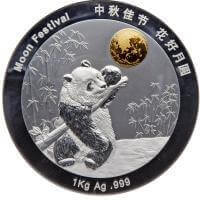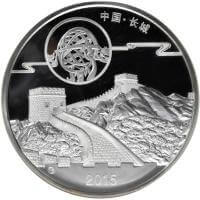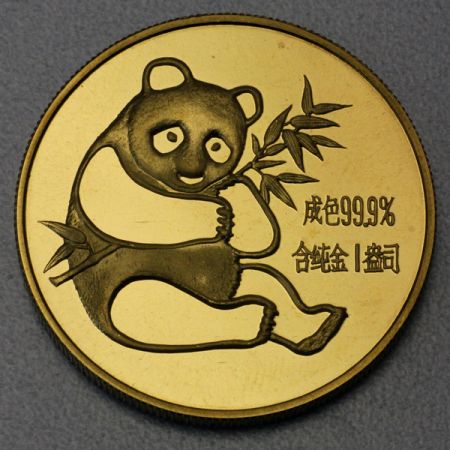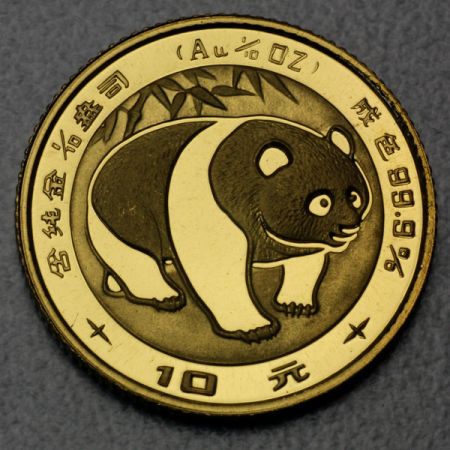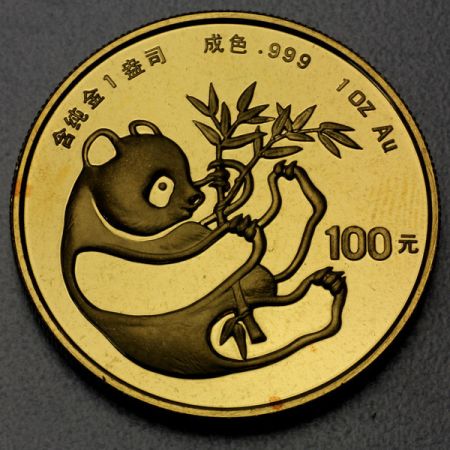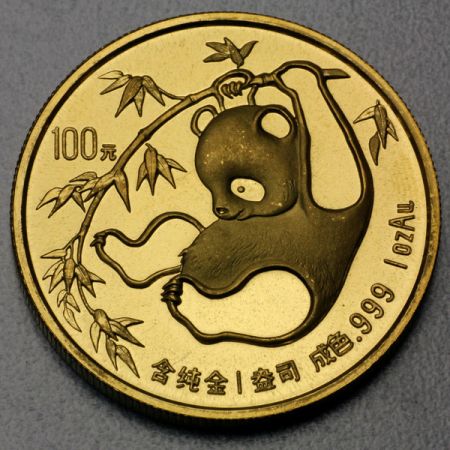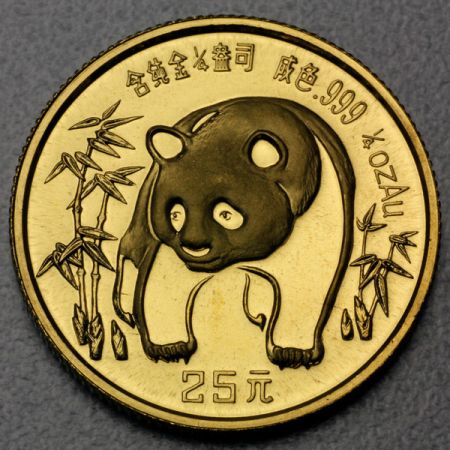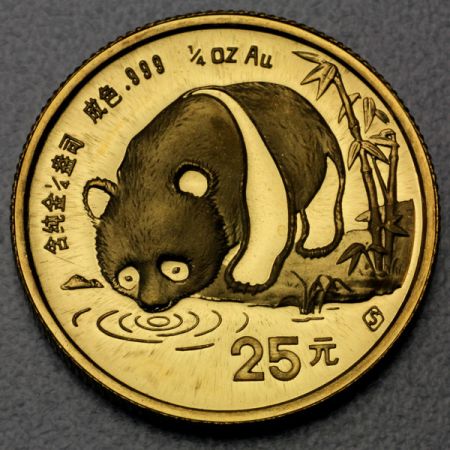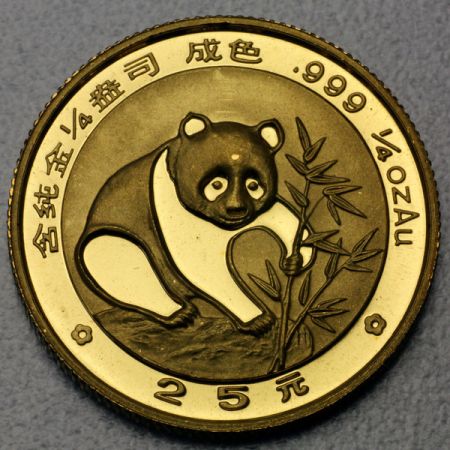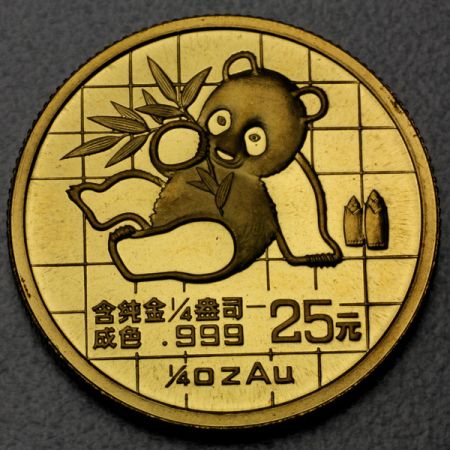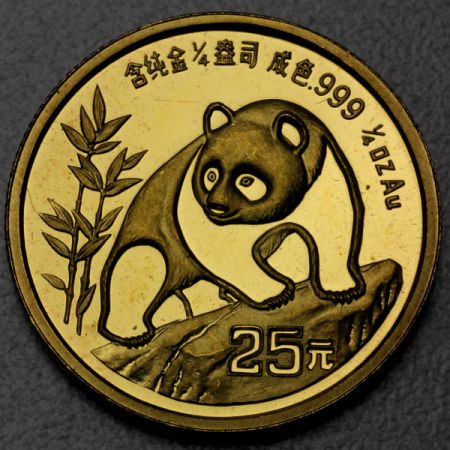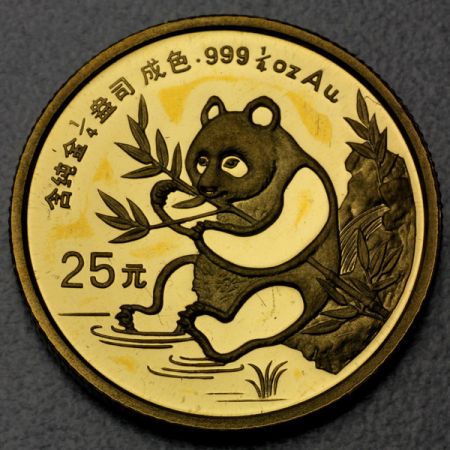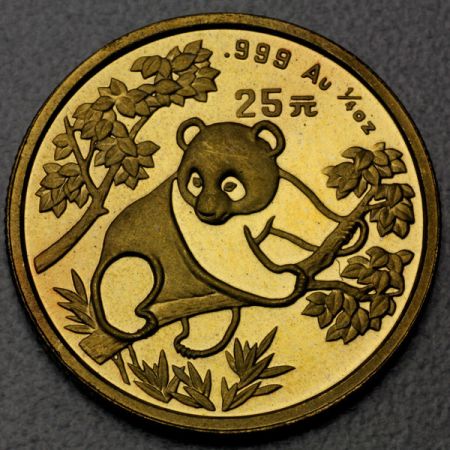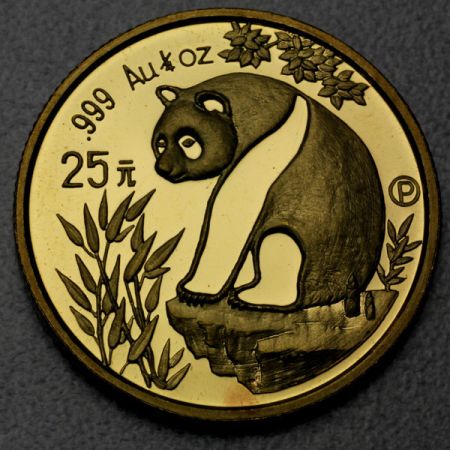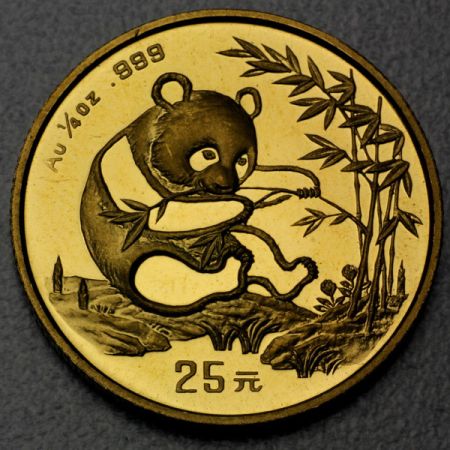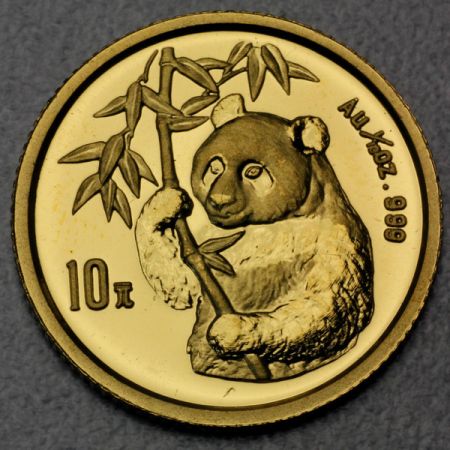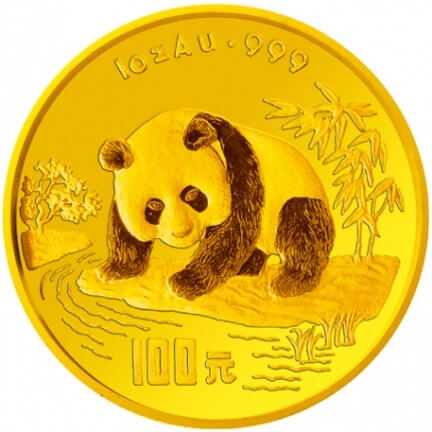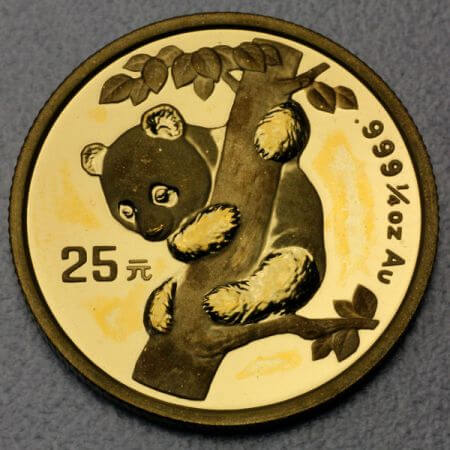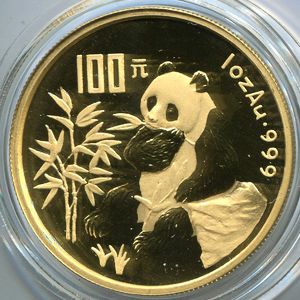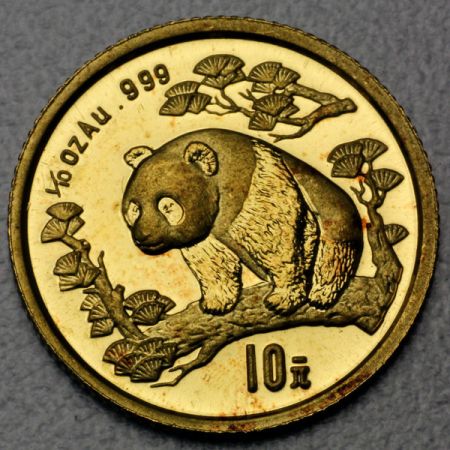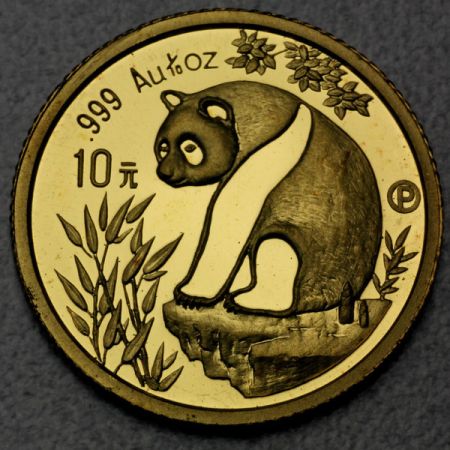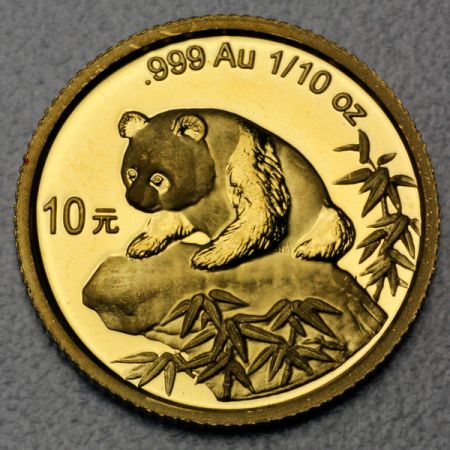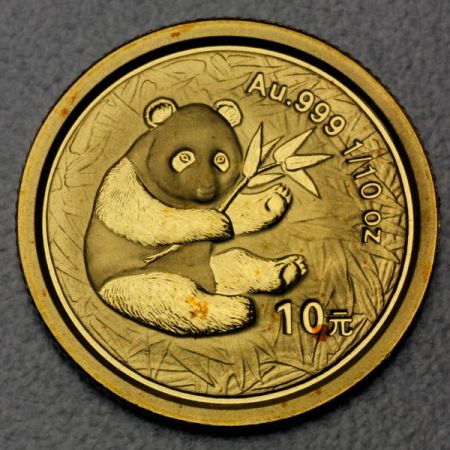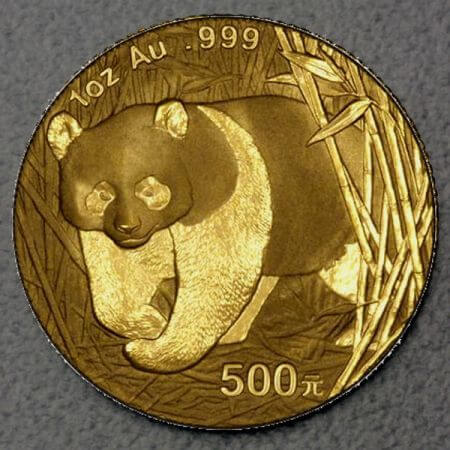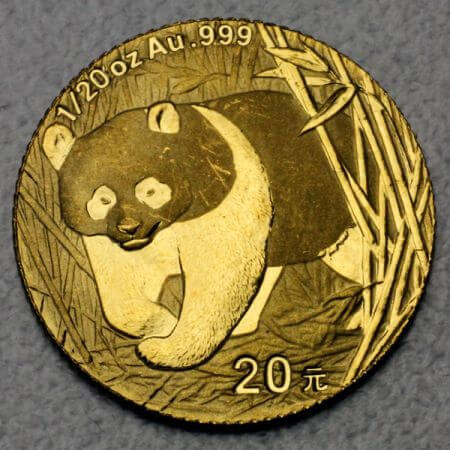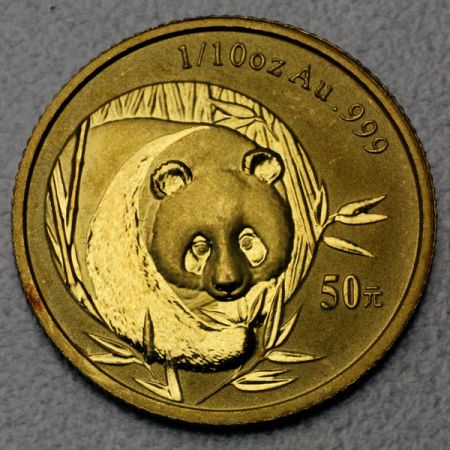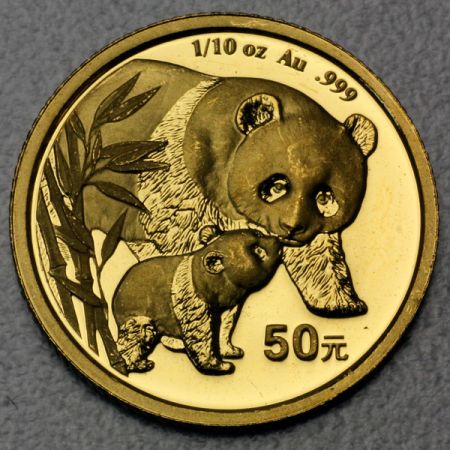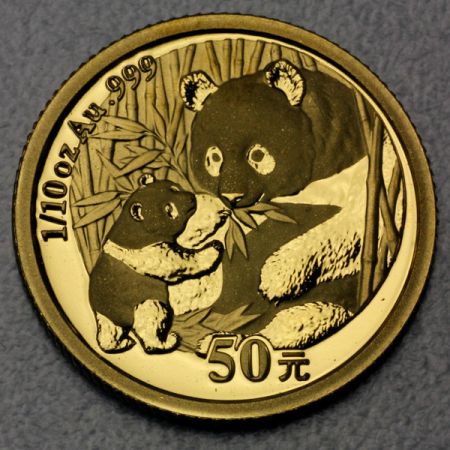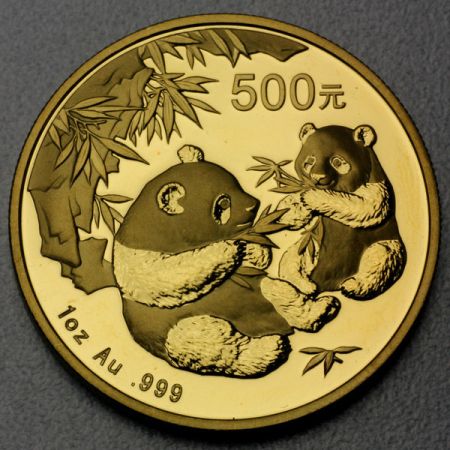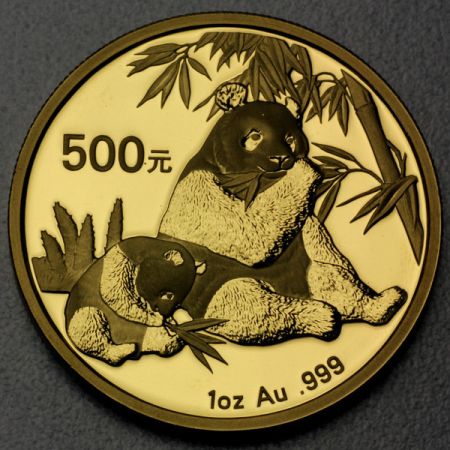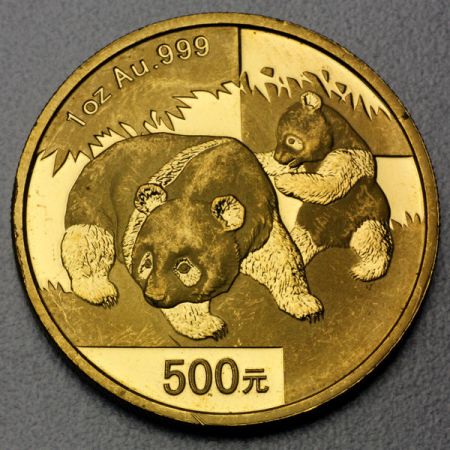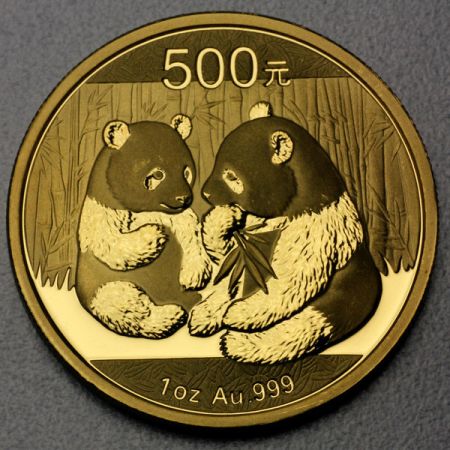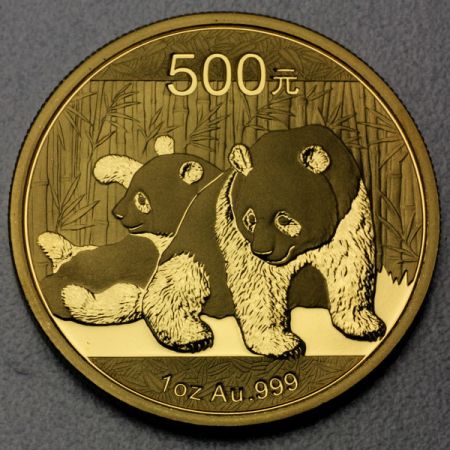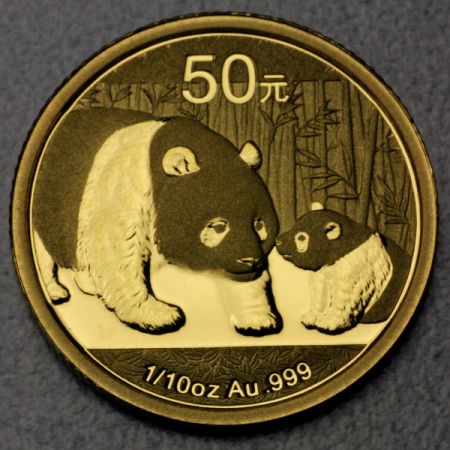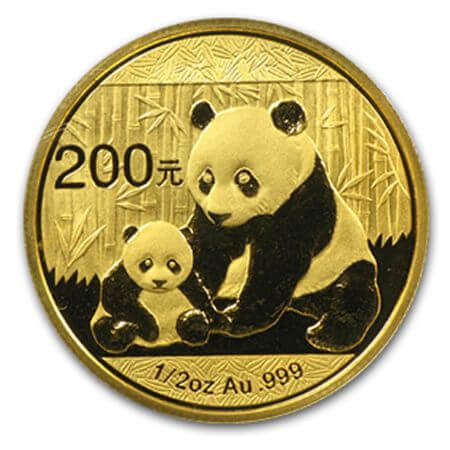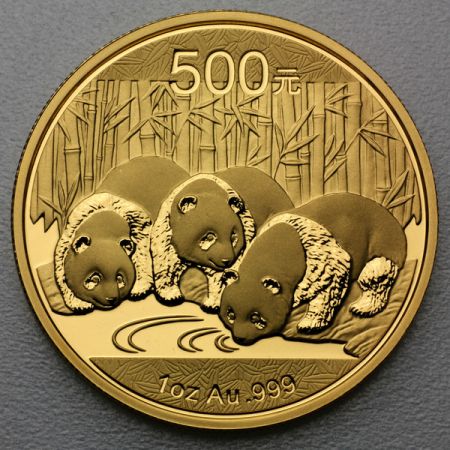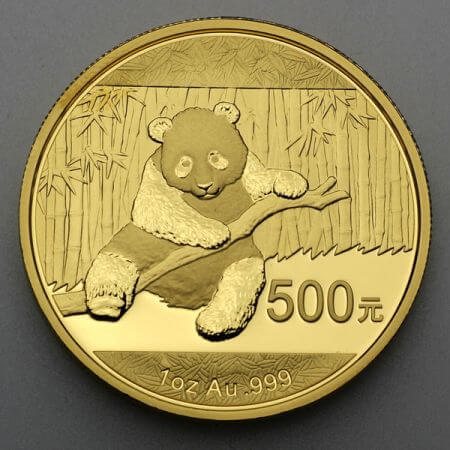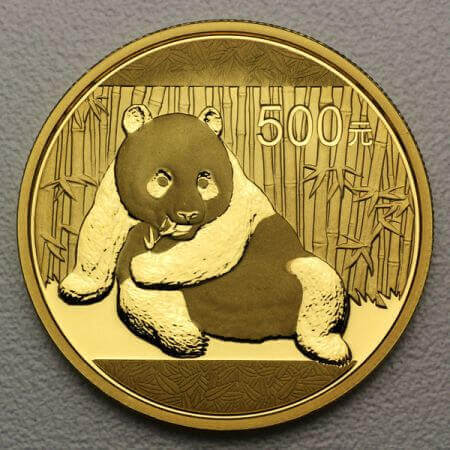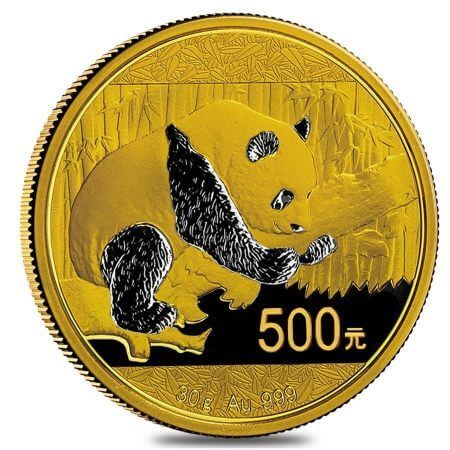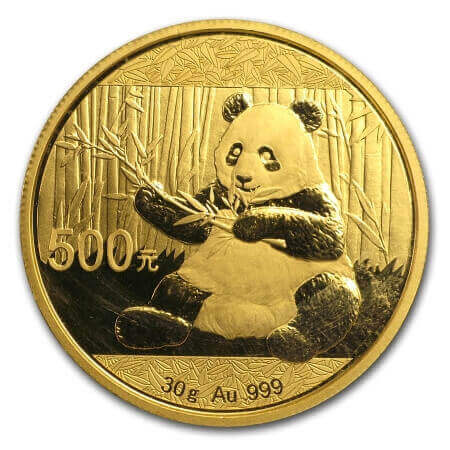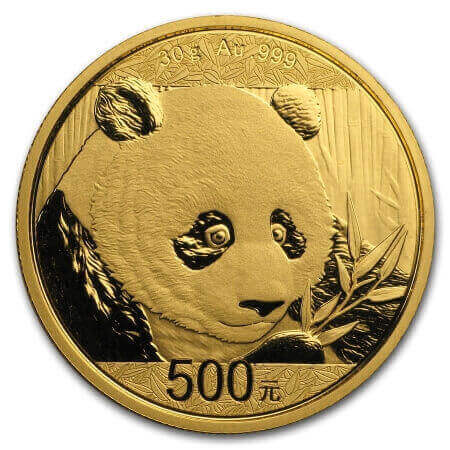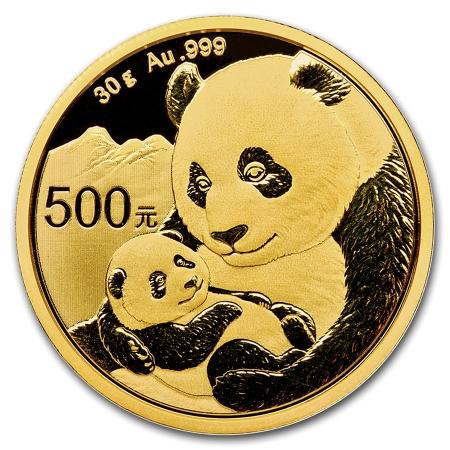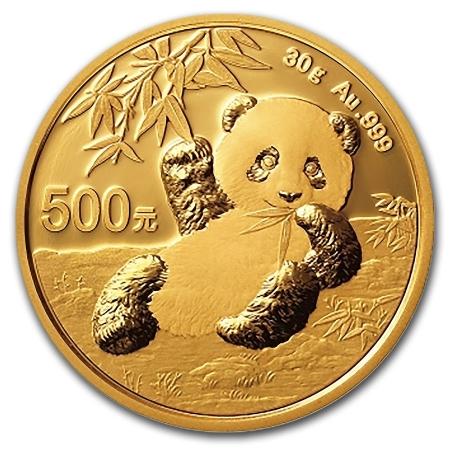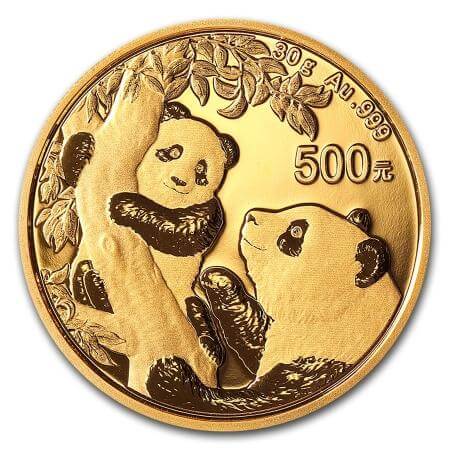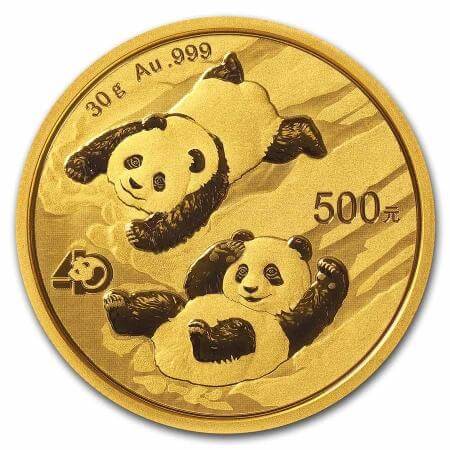Chinese Gold Panda Coins

 Chinese Gold Pandas - the first gold coins with an annually changing reverse design
Chinese Gold Pandas - the first gold coins with an annually changing reverse design
Chinese Gold Pandas are not only popular with investors but also with collectors for the lovely panda images that appear on their reverse side. The coins change the design on their reverse side each year, just like the Australian Gold Lunar coins, British Gold Lunar coins and Australian Gold Kangaroo coins. Therefore, the coins are a good choice for precious metal investors that buy gold coins for the pleasure of admiring their visual design as well instead of only for their inherent value. The China Gold Coin Incorporation already started with the production and distribution of this coin series way back in 1982 which makes the Chinese Gold Panda coins the world's first gold bullion coins with an annually changing design.
Gold Pandas are minted out of 99.9% pure gold. They are offered with a brilliant uncirculated proof-like finish in a wide variety of sizes between 1 gram and 1 kg. A bit unusual compared to other gold bullion coins is that the coin sizes are denominated according to the metric system since 2016. Various special commemorative editions of the Gold Panda coins were minted from time to time. The same design that appears on the reverse side of the gold version of the coins typically also appears on the same year's edition of the Chinese Silver Panda coins. What's more, bi-metallic (gold and silver), platinum and palladium versions of the coins were minted in the past as well.
The legal tender Chinese Panda gold coins are produced under license from the People's Bank of China. Annual mintage numbers of the coins were quite low during most years of production but have increased sharply since 2006. American buyers that are investing in gold for their Individual Retirement Accounts (IRA's) may include the coins therein.

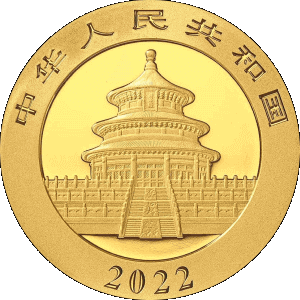
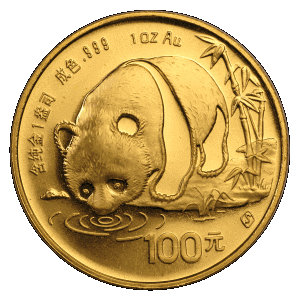
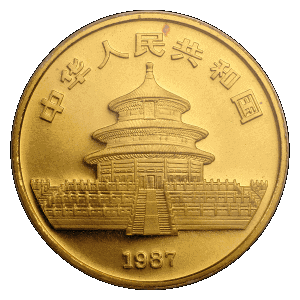
Coin Specifications
| Weight | Face Value | Purity | Diameter |
|---|---|---|---|
| 1 kg** | 10,000 Yuan | 99.9% | 90 mm |
| 150 gram** | 2,000 Yuan | 99.9% | 60 mm |
| 100 gram** | 1,500 Yuan | 99.9% | 50 mm |
| 50 gram** | 800 Yuan | 99.9% | 40 mm |
| 30 gram* | 500 Yuan | 99.9% | 32 mm |
| 15 gram* | 200 Yuan | 99.9% | 27 mm |
| 8 gram* | 100 Yuan | 99.9% | 22 mm |
| 3 gram* | 50 Yuan | 99.9% | 18 mm |
| 1 gram* | 10 Yuan | 99.9% | 10 mm |
* weights until 2015: 1 oz, 1/2 oz, 1/4 oz, 1/10 oz, 1/20 oz
** only minted as proofs
Chinese Gold Panda Coin Designs
Gold Panda Coin Design
The China Banknote Printing and Minting Corporation (CBPM) created the designs on the obverse and reverse of the China Gold Panda coins between 1982 and 1986. In 1987, the China Gold Coin Incorporation took over responsibility for the design, manufacturing and distribution of the popular coins.
The obverse side shows an engraving of the "Hall of Prayer for Good Harvests" that is located inside the Temple of Heaven in Beijing. From the Ming dynasty on, Chinese emperors prayed there every year in early spring for abundant harvests and national prosperity. "People’s Republic of China" is written in Chinese characters along the edge of the coin and the year of mintage appears underneath the engraving.
The reverse side of all Chinese Panda coins shows a representation of a giant panda (or a group of pandas). The actual panda image on the reverse side of the coin changes annually. These coins were the world's first gold bullion coins with annually changing designs on their reverse side. There is one exception to this rule though. The design of the panda engraving on the reverse side didn't change from 2001 to 2002 when the responsible authorities decided that the design should remain constant. The decision was reversed after many collectors complained. The coin's face value, gold purity and gold weight appear on the reverse side as well.
The 40th anniversary edition of the coins that was issued in 2022 includes a special 40 privy mark on the reverse side that features the image of a panda peeking out of the zero digit. That distinguishing feature of the 2022 edition is likely to make these coins especially popular among collectors.
History of the Gold Pandas
The Chinese Gold Panda coin series started in 1982, three years after the People’s Bank of China had issued its first gold coin. The Gold Panda coins were the world's first gold bullion coins with annual design changes of their reverse side (with the exception of 2001/2002 when the design didn't change). Since 1983, all Gold Chinese Pandas have an official face value. The coins were issued in the denominations of 1 oz, 1/2 oz, 1/4 oz and 1/10 oz at first. The 1/20 oz coin followed in 1983. This small size (and the original 1 gram coin of which 110,000 were minted only in 1991) was a world's first for bullion coins. Larger proof coins of 5 oz, 12 oz and 5 kg were minted as well in certain years and in very limited numbers. Since the introduction of the new metric sizes in 2016, larger proof coins are minted in the sizes of 50 gram, 100 gram, 150 gram and 1 kg.
The original face values were 100 Yuan (1 oz coin), 50 Yuan (1/2 oz), 25 Yuan (1/4 oz), 10 Yuan (1/10 oz), 5 Yuan (1/20 oz) and 3 Yuan (for the 1 gram coins that were minted in 1991). The face values of the coins were raised in 2001 to 500 Yuan (1 oz coin), 200 Yuan (1/2 oz), 100 Yuan (1/4 oz), 50 Yuan (1/10 oz) and 20 Yuan (1/20 oz).
The weights of each Chinese Panda gold coin are denominated according to the metric system since 2016. The new gram sizes are the closest equivalent to the prior troy ounce sizes. So, the new 1 gram coin replaced the 1/20 oz coin in 2016 (and changed the face value from 20 Yuan to 10 Yuan) and has nothing to do with the original 1 gram coin from 1991.
You might occasionally also find a Gold Panda coin listed online that doesn't have any face value engraved on it. These coins are produced in very limited mintages since 1983. Chinese government officials hand them out as official gifts to visiting VIP's.
Commemorative issues of the Chinese Gold Panda were minted in proof condition for the 10th anniversary (2,500 coins of 1 oz), 15th anniversary (3,800 coins of 1 oz, 8,000 coins each of 1/4 oz and 1/10 oz), 25th anniversary and 35th anniversary of the coin series. They mention the anniversary in the lettering underneath the Temple of Heaven on the obverse side. The coin set for the 25th anniversary contains 25 coins (1/25 oz with 15 Yuan face value), each showing a different one of the up-to-then used panda motifs.
Various other commemorative editions of the Chinese Gold Panda coins (mostly 1/4 oz coins) were offered by banks, exhibitions and trade fairs (such as the Munich Money Fair), often in anniversary years.
Mintage Numbers
General production numbers for Gold Panda coins vary wildly, from only 13,532 minted coins in 1982 to 289,055 coins in 1988 (for coins of 1 oz). Since 2007, mintage figures have increased substantially but it is unclear whether these projected maximum mintages were actually reached and how many of these coins were sold. As for the smaller denominations, only 4,168 half-ounce coins were minted in 1998. In general, production numbers were lowest from 1982 to 1984 as well as in the mid-1990's.
Gold Pandas were first issued in proof condition in 1986. Proof coins bear the mint mark P on their obverse side. Until 1993, around 10,000 coins were minted annually for each denomination in proof condition. The design of the proof coins was identical to the brilliant uncirculated coins from 1986 to 1994. The mint mark P does not appear on the 1995 and 1996 proof coins. These can be distinguished by their unique panda design (different from that on the brilliant uncirculated coins) though. The proofs from these two years are also the most valuable since only 2,000 proof Pandas of 1 oz were minted in 1995, followed by 1,500 such 1 oz proofs in 1996. In 2007, proof Pandas of 1/25 oz made up the 25th Anniversary Set (See below).
Only in 1991 were 1 gram Chinese Gold Pandas with a 3 Yuan face value produced. The large denominations - 5 oz, 12 oz and 1 kg - were only minted in certain years.
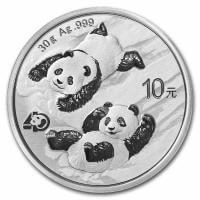
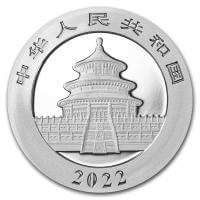
Chinese Silver Pandas
The first Chinese Silver Panda coins were already minted in 1983, but they were only 90% pure and only available with a proof finish. The China Gold Coin Incorporation produces the coins in their current purity of 99.9% since 1989. The brilliant uncirculated 'bullion' version is currently only being offered in the denomination of 30 gram (1 oz until 2015). Proof coins exist in other sizes as well. Chinese Silver Pandas mostly bear the same design as the Chinese Gold Pandas that were issued the same year but there are some exceptions. There exist many special versions of the coins as well, for example gilded and colored coins as well as coins with special privy marks.
The Chinese Silver Panda page gives more information about the coins and allows you to compare current prices.
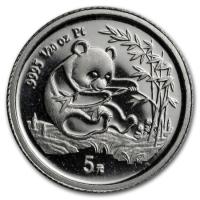
Chinese Platinum Pandas
Chinese Platinum Panda coins with a fineness of 99.95% were only released by the China Gold Coin Incorporation from 1987 - 1990, 1993 - 1997 and 2002 - 2005 in the denominations of 1 oz (100 Yuan face value), 1/2 oz (50 Yuan), 1/4 oz (25 Yuan), 1/10 oz (10 Yuan, 100 Yuan in 2002 and 2005) and 1/20 oz (5 Yuan, 50 Yuan in 2003 and 2004). The 1 oz Chinese Platinum Pandas were minted between 1987 and 1990. Those coins bear the same design as the gold coins of that year. The 1/2 oz and 1/4 oz coins were only minted in 1990 and both of them displayed a unique panda design. The 1/10 oz coin was minted in 1990 (with unique panda design), 1993 - 1997, 2002 and 2005. Finally, the 1/20 oz platinum coins were minted between 1993 and 1997 and in 2003 and 2004.
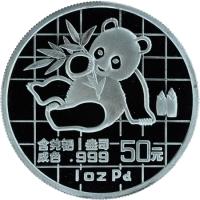
Chinese Palladium Pandas
In 1989, the 99.9% fine Chinese Palladium Pandas made their debut as a coin (commemorative proof Palladium Panda medals had been issued in 1988). A total of 3,000 proof 1 oz Chinese Palladium Panda coins was minted that year by the China Gold Coin Incorporation. The nominal face value of each of these coins was 50 Yuan.
The next Palladium Pandas came out in 2004. A total of 8,000 proof coins of the 1/2 oz denomination (100 Yuan face value) was minted that year. The same number of proof coins of the same denomination was minted again the following year 2005.
All three different issues of the Chinese Palladium Panda bear the same panda design that was also used on that year's gold version of the coins.
Chinese Panda Gold Coin Sets
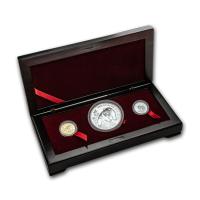
3 coin Prestigious Panda Set 1990
total gold weight: 0.1 oz
total silver weight: 1 oz
total platinum weight: 0.1 oz
The 3 included coins in this set were the 1/10 oz brilliant uncirculated Chinese Gold Panda, 1 oz proof Silver Panda and 1/10 proof Platinum Panda. All coins were dated 1990 on the obverse. A total of 750 such sets were issued.
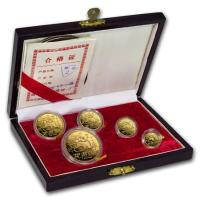
Gold Panda Proof Sets 1986-1992
total gold weight: 1.9 oz
From 1986 to 1992, such 5 coin proof sets were issued annually. The 5 included proof coins were the 1 oz, 1/2 oz, 1/4 oz, 1/10 oz and 1/20 oz Gold Pandas (with the P mint mark). In 1986 and 1987, 10,000 such sets were issued, followed by 8,000 sets in 1988 and 1989, 5,000 sets in 1990, 3,500 sets in 1991 and 2,000 sets in 1992.
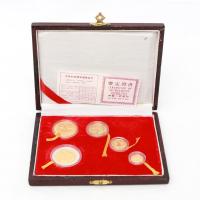
Gold Panda Proof Sets 1993-1994
total gold weight: 1.15 oz
total silver weight: 1/8 oz
2,500 such proof sets were issued in 1993 & 1994. The 1/2 oz, 1/4 oz, 1/10 oz and 1/20 oz proof Gold Panda coins are included. The 5th coin is a bimetallic (gold core & silver outer ring) coin out of 1/4 oz gold + 1/8 oz silver. All 5 included coins bear the P mint mark.
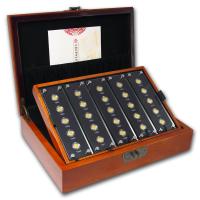
25th Anniversary Proof Set 2007
total gold weight: 1 oz
18,000 such sets with 25 proof coins of 1/25 oz each (face value: 15 Yuan; diameter: 12 mm) were issued. Each of the 25 proof coins shows a different original panda design from the years 1982 until 2007. "25th Anniversary of the Issuance of the Panda Coin" is inscribed in Chinese underneath the Temple of Heaven.
